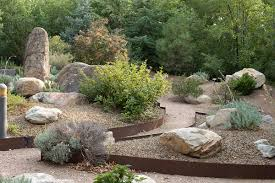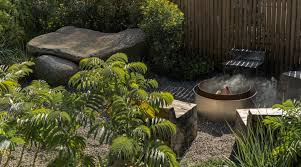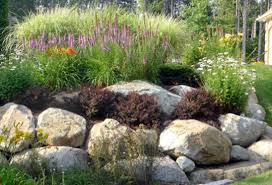Many gardeners focus on the plants in their landscape, but have you considered using boulders? If not, it’s time to give them a second look! While plants often steal the spotlight in garden design, large rocks can add an undeniable aesthetic and structural value to your space.
Incorporating boulders into your landscape might seem unconventional at first, but these stones can offer contrast and character that plants alone cannot provide. However, proper planning and strategic placement are key to utilizing them effectively.
What You’ll Learn
- Understanding Boulders
- Why Use Boulders?
- Selecting the Right Boulders
- Placement Tips
Boulders 101
Boulders are a key element in hardscaping, which refers to the non-living components of a landscape such as bricks, wood, and stone. They are defined as stones with a diameter larger than 10 inches. Smaller stones fall into categories like pebbles, cobbles, and gravel.
Boulders come in two main forms: round and angular. Round boulders are smoother, shaped by natural forces like water and wind. Angular boulders, on the other hand, are jagged and come from quarries. Depending on your aesthetic, you can choose from a wide range of materials and colors, including granite, sandstone, limestone, and even marble. Some stones may even develop a mossy patina, enhancing the natural appeal of your landscape.

Why Use Boulders?
Boulders are more than just decorative elements. Here are three main reasons to incorporate them:
- Aesthetic Appeal: When strategically placed, boulders can add texture, interest, and dimension to your landscape. They serve as an excellent contrast to vibrant plants, and in some cases, they can even become the focal point of a garden, as seen in rock gardens.
- Structural Function: Boulders can help create solid structures, such as retaining walls, borders for planting beds, or even pathways. Stacked stones can form steps or barriers, and their durability ensures they’ll withstand the elements longer than delicate plants.
- Low Maintenance: Unlike plants that require attention, water, and care, boulders are virtually maintenance-free. They don’t need sunlight or fertilizers, and they won’t wilt or attract pests. They’re a great option for xeriscaping, a method of landscaping that reduces water usage.

Selecting the Right Boulders
When choosing boulders for your landscape, consider these factors:
- Local Geology: Choose stones native to your region for a more natural look. For example, red sandstone works well in desert landscapes, while granite complements Midwestern gardens.
- Plan Ahead: Boulders are heavy and difficult to move, so planning where to place them before making a purchase is essential. Use landscaping tools or simple methods like graph paper and a tape measure to determine the best layout.
- Size Matters: While it’s easy to underestimate the size of boulders at the store, they often look smaller in the yard. Don’t be afraid to go big, but make sure they don’t overwhelm your space.
- Color Selection: Colors have a psychological impact. Light tones like ivory create a calm atmosphere, while darker colors like brown or black exude strength. Choose shades that align with the mood you want to set.
- Contrast with Plants: Boulders should complement, not compete with, your plants. A vibrant ground cover can help highlight the natural beauty of your rocks, creating a dynamic and appealing contrast.
Placement Tips
Once you’ve selected your boulders, here’s how to place them effectively:
- Bury Them: To make the rocks appear as if they’ve been in the landscape for centuries, partially bury them in the soil. This anchoring technique not only enhances their appearance but also prevents them from shifting over time.
- Group Stones: A single, solitary boulder may look out of place. Grouping stones together in clusters creates a more natural look and adds visual interest.
- Create Levels: Vary the height of your boulders by arranging them in tiers or steps. This adds depth to your landscape and makes the space feel more dynamic.
- Avoid Symmetry: Nature is full of irregularities, so don’t place rocks in uniform lines. Instead, mix different sizes and types to maintain a more organic feel.
- Trust Your Instincts: Ultimately, your landscape should reflect your taste. If something doesn’t feel right, don’t hesitate to rearrange or try a different approach. Trust your gut to create a space that feels balanced and harmonious.

Conclusion
Using boulders in landscaping can transform your garden from ordinary to extraordinary. Whether you’re looking to add texture, create structures, or reduce maintenance, boulders are versatile and enduring elements that enhance your outdoor space. With careful selection and thoughtful placement, you can craft a landscape that’s not only functional but visually captivating.
Now that you’re equipped with the knowledge to use boulders effectively, it’s time to get started on your own rock-filled garden adventure!
